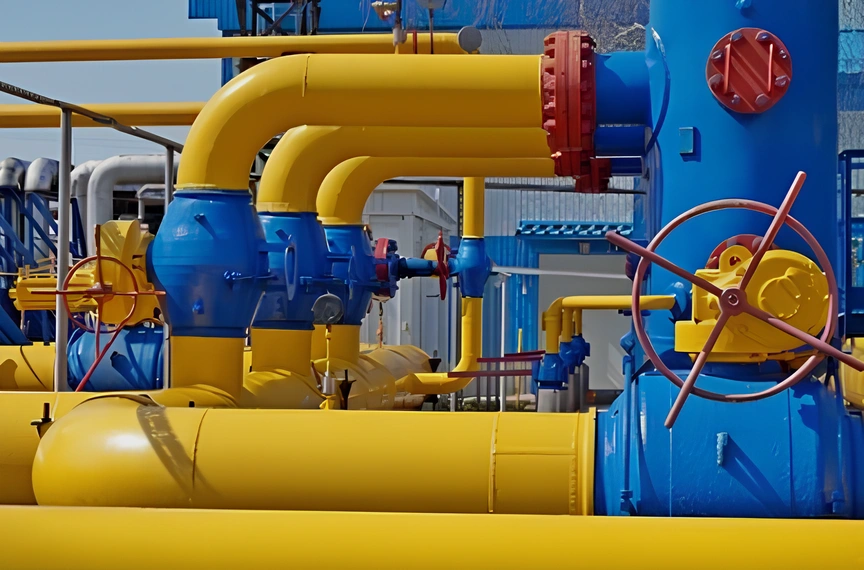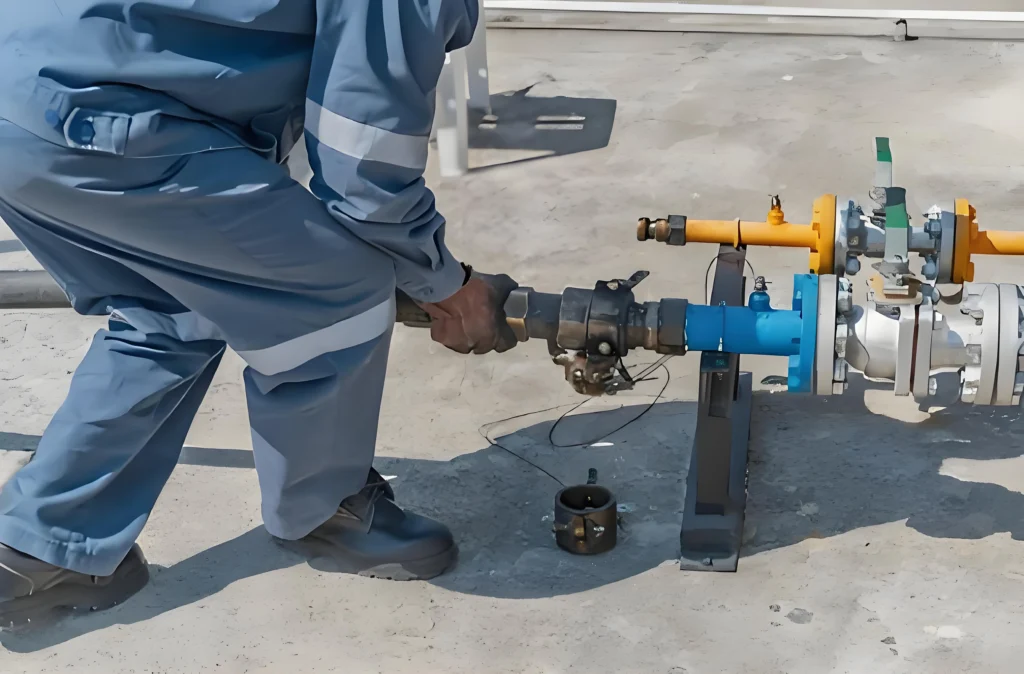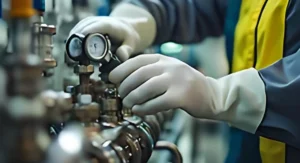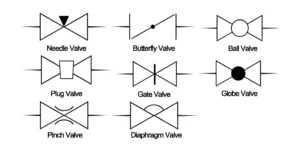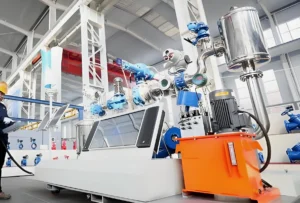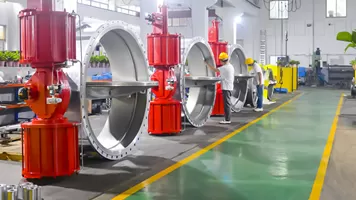Whether in the petrochemical industry in the complex process of liquid and gas transportation, or building water supply and drainage systems in the regulation of water flow, are inseparable from the efficient and reliable valve device. As an important member of the valve family, ball valves play a key role in various fluid control systems with their unique structure and excellent performance.
Structure and working principle of ball valve
Ball valves are mainly composed of valve body, ball, valve stem, seals and operating handle and other components. The valve body is usually made of metal, such as cast iron, carbon steel, stainless steel, etc., to provide a strong shell structure for the entire valve and withstand fluid pressure. The ball is the core component of the ball valve, which has a round shape and a hole in the center that matches the inner diameter of the pipe. The ball is connected to the operating handle by the stem, which is sealed to ensure that fluid does not leak along the stem during operation.
When the operating handle is rotated, the stem rotates the sphere. The angle of rotation of the sphere determines the opening of the valve. When the through-hole of the sphere coincides with the axis of the pipe, the valve is fully open and the fluid can pass through the valve smoothly; when the sphere is rotated 90 degrees so that the through-hole is perpendicular to the axis of the pipe, the valve is completely closed and the flow of fluid is cut off. The sealing between the ball and the valve body relies on specially designed seals, such as rubber seals or metal sealing rings, to ensure good sealing under different pressure and temperature conditions.
Ball valves in various fields of application
Industrial
Petrochemical: In the petroleum refining and chemical production process, involving a large number of various properties of fluid transportation and control. Ball valves can accurately control the flow of crude oil, refined oil, a variety of chemical raw materials and finished products, and because of its good sealing performance, can effectively prevent the leakage of toxic, hazardous, flammable and explosive media, to protect production safety. For example, in the oil pipeline transportation network, long-distance transportation of crude oil needs to be in different sites for flow distribution and cut-off control, ball valves can reliably complete these tasks.
Natural gas transportation and distribution: ball valves are indispensable equipment in the entire transportation system of natural gas from the extraction site to the user terminal. In high-pressure natural gas trunk pipelines, large ball valves are able to withstand extremely high pressures and operate stably, realizing precise regulation of natural gas flow. In the city gas distribution network, ball valves are installed in all branch pipelines and customer access points to facilitate the control of gas supply in localized areas and cut-off operations during maintenance work.
Power industry: In thermal power plants, water and steam are the main working media. Ball valves are used to control the fluid flow in boiler feed water, steam discharge and cooling water circulation systems. For example, ball valves on boiler feed water piping can accurately regulate the amount of water entering the boiler to ensure the stability and safety of boiler operation. In steam discharge piping, ball valves can quickly and effectively cut off or regulate the discharge flow of steam to adapt to different operating conditions.
Civilian sector
Building water supply and drainage system: In modern buildings, from the municipal water supply pipeline access to the various water areas inside the building, ball valves are widely used in faucets, toilet tank inlet valves, water heater inlet valves and other parts. Its operation is simple and convenient, users can easily control the size of water flow by rotating the handle. At the same time, the ball valve has good sealing performance, which can effectively prevent water leakage, avoiding the waste of water resources and damage to the building structure.
HVAC system: In heating and cooling systems, the circulation of hot water or refrigerant requires precise control. Ball valves are installed in piping systems to regulate the flow of fluids and realize temperature regulation in different rooms or areas. For example, in the branch piping of a central air-conditioning system, ball valves are able to adjust the flow of refrigerant sent to each area according to actual demand, so as to achieve a comfortable indoor temperature environment.
Advantageous features of ball valves
Excellent sealing performance: Whether rubber seal or metal seal is used, the ball valve can realize extremely high sealing grade in the closed state. Rubber seal is suitable for low pressure and normal temperature conditions of fluid control, has good elasticity and sealing performance, can effectively prevent small leakage. Metal seal is more suitable for high temperature, high pressure and corrosive media conditions, through the metal sealing surface of the precision fit, even under extreme conditions can ensure reliable sealing effect.
Convenient operation: the operating handle of the ball valve usually only needs to be rotated 90 degrees to realize the state from fully open to fully closed conversion, simple and fast operation. Compared with some traditional valves, such as gate valves require multiple rotations to fully open or close, ball valves greatly save operating time and labor costs. This fast operation characteristics in emergency situations, such as the need to quickly cut off the fluid flow to prevent the expansion of the accident, is particularly important.
Fluid resistance is small: because the ball in the open state and the fluid flow direction is basically the same, the resistance of the fluid through the ball valve is relatively small. This makes in the process of conveying fluid energy consumption is reduced, for large-scale fluid transportation system, such as long-distance water pipeline or oil pipeline, can significantly save energy costs and improve the efficiency of transmission.
Long service life: the structure of the ball valve is relatively simple, the main components such as the ball, valve body, etc. under normal use and maintenance conditions have a long service life. Although its seals have a certain service life, but in the case of regular maintenance and replacement, the entire valve system can be a long time stable operation. Compared with some types of valves that are easy to wear and corrode, ball valves have obvious advantages in terms of long-term operating costs and reliability.
Ball valve material selection and installation and maintenance
Material Selection
Valve body material: according to the application of the pressure, temperature and medium corrosivity and other factors to choose the appropriate valve body material. For general civil and low-pressure industrial applications, cast iron valve body has the advantages of low cost, casting performance; in the high-pressure industrial environment, carbon steel and stainless steel valve body is more commonly used, stainless steel valve body has good corrosion resistance, suitable for chemical, food and other industries in the control of corrosive media.
Ball material: ball material also need to consider the working conditions. For ordinary water media and some non-corrosive gas control, carbon steel ball or stainless steel ball can meet the requirements. In corrosive media or high temperature and high pressure environment, may need to use special alloy ball, such as Hastelloy, Monel alloy, etc., to ensure the corrosion resistance and mechanical strength of the ball.
Sealing materials: rubber sealing materials such as nitrile rubber (NBR) for general water and oil media, with good oil resistance and elasticity; fluoroelastomer (FKM) has a wider range of chemical resistance, suitable for some acidic, alkaline media sealing. For metal seals under high temperature and high pressure conditions, commonly used metal materials include stainless steel, hard alloy, etc. The flatness of the sealing surface and sealing performance are ensured by precision grinding and processing.
Installation and maintenance
Installation points: When installing the ball valve, first of all, make sure that the piping system is clean and free of impurities to prevent impurities from entering the sealing surface between the ball and the valve body when the valve is opened and damaging the seals. Installation should pay attention to the valve’s flow direction marking, to ensure that the fluid flow direction and valve design flow direction. For larger caliber ball valves, may need to install with the help of lifting equipment, to ensure that the valve is installed in an accurate position, firmly connected, to avoid uneven force caused by improper installation of the valve and affect its service life and sealing performance.
Maintenance points: regularly check whether the operating handle of the ball valve is flexible, if there is a stagnation phenomenon should be promptly investigated and lubricated. Check whether the seals are aging, wear and tear or signs of leakage, for rubber seals, generally according to the use of every certain period of time (such as 1 – 3 years) for replacement. For metal-sealed ball valves, check the wear of the sealing surfaces periodically and repair by grinding if necessary. At the same time, pay attention to the overall appearance of the valve, check the valve body for corrosion, deformation, etc., to detect and deal with potential safety hazards in a timely manner.
The future development trend of ball valves
With the continuous progress of industrial technology and various industries on the increasing requirements of fluid control, ball valves are also in the continuous development of innovation. On the one hand, the development of materials science will provide more excellent performance for the ball valve material selection, such as new high-strength, corrosion-resistant alloy materials will further expand the ball valve in the extreme operating conditions of the application range. On the other hand, intelligent technology will be gradually integrated into the ball valve design. Intelligent ball valves can be equipped with sensors, real-time monitoring of the valve’s operating status, fluid pressure, temperature, flow and other parameters, and through wireless communication technology to transmit these data to the monitoring center. Operators can remotely control the opening of the valve to realize an automated fluid control system and improve production efficiency and management. In addition, in the context of increasingly stringent environmental protection requirements, the design and manufacture of ball valves will pay more attention to energy saving and emission reduction by optimizing the structural design to reduce fluid resistance and energy consumption to meet the needs of sustainable development.


